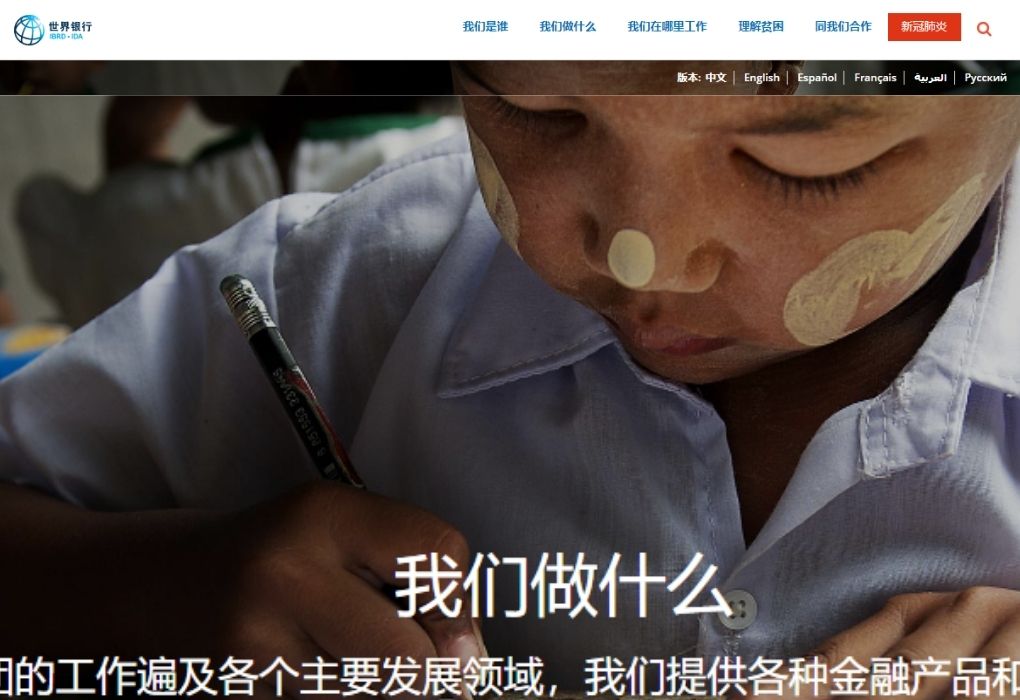Microfinance in China is booming

Young generations are driving the growth of the microfinance market nowadays. While more and more companies are investing in the financial market, fighting to own at least a piece of such a lucrative market, the government, on one hand, is stimulating its development and, on the other hand, is trying to limit liabilities of Banks by increasing that of big tech Giant as Alibaba.
This article is a simplified guide on Micro-finance that explains:
- What are “microfinance” and “microcredit”?
- How does “microcredit” develop in China?
- What is the latest news about microfinance in China?
- How to launch a financial company in China?
What is microfinance?
The term microfinance has intended a series of financial services, like loans, remittances, savings, insurance, and currency payment, which are offered to small and microenterprises and low-income families.
Cost-Effective Agency
KPI and Results focused. We are the most visible Marketing Agency for China. Not because of huge spending but because of our SMART Strategies. Let us help you with: E-Commerce, Search Engine Optimization, Advertising, Weibo, WeChat, WeChat Store & PR.
What is microcredit?
The microfinance industry includes microcredit, a kind of microfinance service mainly provided to rural people.
The Development of “microcredit” in China

The history of microcredit can be divided into three phases.
Phase one: China Poverty Alleviation Program
During the first phase, different organizations and institutions supported poor people in China through microcredit, from 1980, but the official launch of microcredit activities happens in 1993 when the Chinese academy of social science provided the poverty alleviation program. From 1993 to 1998 the most important events that contribute to helping Chinese citizens with difficult living conditions had been:
- In 1994, the Grameen Trust and Canadian Funds (China’s first poverty relief agencies) adopted the Grameen bank’s microcredit experimental model (GB model for short).
- In 1995, the United Nations Development Program (UNDP) realized a series of projects of microcredit in 48 counties, 18 provinces, and 4 large and medium-sized cities.
- In 1996, the World Bank and the Ford Foundation held an international seminar on “Microcredit for poverty alleviation” in Beijing, during which the role of “microcredit” has been confirmed as essential for poverty alleviation in China.
- In 1998, this thought was confirmed once again by the Poverty Relief Office at the national poverty alleviation work conference.
Phase 2: Government Financial institutions offer Micro-credit
During the second stage, Chinese people saw the full participation of government financial institutions in the “microcredit” activities. In fact:
- In 1991, Rural Credit Cooperatives (RCCs) started to offer microcredit and group loans to rural households. under the supervision of The People’s Bank of China (PBOC)
- since 2002, the central government asked local and provincial governments to guarantee funds to help laid-off workers to maintain self-employment. This action has been able to expand “microcredit” from rural areas to cities.
Phase 3: “microcredit” is institutionalized in China.
- In 2005, The People’s Bank of China, with the cooperation of RCCs, invested in microcredit companies (and opened microcredit companies) in the province of Shanxi, Shaanxi, Sichuan, Guizhou, and Inner Mongolia landing 95 billion yuan.
- Since 2010, The China banking regulatory commission, the People’s Bank of China, and other regulatory authorities issued numerous important policies and documents, in order to quickly develop the microcredit market. Also, the support of local governments contributes to achieving the growth of the sector. In these circumstances, “microcredit” evolved into a multi-level and pluralistic market. Here the protagonist is commercial Banks, rural commercial banks, and rural credit cooperatives, whereas the new types of rural financial institutions and microcredit provide credit to small businesses, the micro-enterprises, and individual enterprises and farmers, etc.
What are the main problems related to Microcredit in China?
Financial institutions are not so well-disposed to offer credits since an excessive number of companies demand small amounts without having the possibility to pay back the loan. This also results in high costs for reviewing and monitoring the pre-phase and post-phase of the service.
Also, the dispersion of position distribution and small business volumes has made small-and-micro businesses own more of the average management cost than big companies.
Finally, high cost, as well as high risk, led to a high non-performing ration, in fact, that of the rural commercial bank was 3.96 in 2018 (the non-performing loan accounts for 535.4 billion yuan), and 1,83% that of commercial Banks’ (the non-performing loan accounts for 2.03 trillion yuan).
What is the latest news about microfinance in China?
Recently, the works “microfinance” and “microcredit” seem to be related to e-commerce and other online services, typically used by the young Chinese. The last relevant news about “microcredit” talks about two Giants of the Chinese online market: Alibaba and Didi.
Ant financial group limited its credit services to young consumers

This December, Ant Financial Service Group Co., Alibaba’s financial-related service company, limited the amount of money young consumers can receive through credit services. The monthly credit limits were lowered to around $458.7 on social media platforms.
It has been an unexpected move and many consumers complained about it since they state to have always paid back the loans, in addition, Ant Group took this decision without any notice.
However, the government is more and more worried about the excessive amount of debt cumulated by younger consumers, that, according to a 2018 survey of Rong360, are becoming the principal users of the microcredit service since around half of the respondents who took out loans belongs to Gen-Z.
What is the popular Ant Group’s online credit service?
This service, or function, is part of Alibaba’s online payment platform Alipay and it is named Huabei. It works like a digital credit card and allows users to borrow money without interest for 40 days. When a user repays its debts on time, Huabei increases his borrowing limits.
The loan balances of Ant Group are 2.1 trillion yuan, surely a huge sum, especially if compared to the total amount of short-term consumer loans issued by the Chinese banks, which is 8.1 trillion yuan.
The central government’s reaction? Micro-lending platforms must jointly fund at least 30% of any loan they make with banks.
Didi launched trials of the “Didi monthly payment”

The Chinese ride-sharing Giant Didi Chuxing appears interested in enlarging its financial services. The new service, the “Didi monthly payment”, is just an attempt to pursue such an objective for now. The company is in fact offering the trials to a select number of customers.
This group can make payment on credit and while the app issues the bill on the first of the following month, the repayment date is scheduled for the Eight of that month.
It’s not the first Didi launches a financial service, the company already provided consumers with loans and insurance.
How to launch a financial company in China?
China’s financial market was an unconquerable place for foreign companies years ago. But today, the financial environment is completely different as the government is willing to attract foreign capital and wants to broaden the financial system.
So, Foreign Financial companies have the possibility to enter this huge and complex market nowadays, even if they have to be able to move fast and strategically.
In order to be prepared for the different challenges waiting for them in China, Foreign Financial companies must consider the market barriers: complex policies, the requirement of a special license based on a different scope, the complexity of administration work for tax accounting, human resources, and corporate formation, the way Chinese communicate and their culture (both completely different from European standards).
What steps does a financial company need to follow to operate in China?
- obtain the business license
- obtain the approval from the finance industry administration authority (which are the People’s Bank of China, the China Banking and Insurance Regulatory Commission Ministry of Commerce, and the China Securities Regulatory Commission)
- open a bank account
- complete the tax registration process
- indicate a qualified working address
- be visible online
and not only.
The process is very long and so time-consuming that a foreign company absolutely needs a local partner that can help it to manage such difficult operations.
How can a foreign financial company be visible online?

The Chinese market is extremely connected to the digital world, so it is impossible to think to present in such an advanced and big market without a digital strategy. A successful strategy must include many channels to be effective, but it is important to choose the right ones according to your company profile and budget.
By the way, there are some digital platforms and online places any company in China cannot ignore. Generally speaking, the first investment in the digital eco-system a company must include are:
- Have a website written in Chinese and hosted in China. The website must have a good design and quality images to be considered attractive, and the language obviously must be correct (take into consideration that Chinese is considered the most difficult language on earth)
- Doing SEO on Chinese search engines: we always suggest Baidu since it owns 70% of the market’s share
- Have at least one social media account: there are an infinite number of social media in China and are becoming the most important place to build brand awareness and nurture your audience.
Our guide end here. If you want to know more about the Chinese financial market, feel free to contact us.
Develop your financial service in China
SEO China Agency is a digital marketing agency based in China, Shanghai. Our team has helped several companies to enter the Chinese market and strengthen their position in China.
Read more about finance here:







